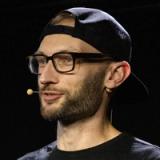Welcome

The lessons in this course are written at a level that assumes you have some experience in web application development. As such, it rapidly and lightly touches almost every part of the Sanity Content Operating System.
My name is Simeon Griggs, and I've been building content-editable applications for almost my entire career. I'm enthusiastic about the vast array of options that Sanity gives developers to create content-editable applications.
Through these courses, I hope to inspire you to see what's possible so that you will go above and beyond default settings and cookie-cutter CMSes for your next build and to the benefit of content creators.
This track, Mastering content operations, covers the entire Sanity Content Operating System with the end goal of preparing you for the Sanity Certified Content Operator exam—which unlocks upon completion of all courses in this track.
- If you'd prefer to work frontend-first with a focus on websites, consider the Work-ready Next.js track.
- If you're looking for AI-specific guidance take the AI-powered Sanity development course.
- If you're in a hurry—or Next.js isn't your favorite—see Getting started with Sanity for other framework specific guides which are optimized to get you going in no time.
- If you're feeling confident, see the Templates page for a variety of framework-specific templates ranging from clean to fully-featured.
To complete this course, you will need the following:
- A free Sanity account to create new Sanity projects. If you do not yet have an account, you'll be prompted to create one from the terminal.
- Some familiarity with running commands from the terminal. Wes Bos' Command Line Power User video course is free and can get you up to speed with the basics.
- Node (version 20 or greater) installed (or an npm-compatible JavaScript runtime) to install and run Sanity tools locally.
- Some familiarity with JavaScript. The code examples in this course can all be copied and pasted and are written in TypeScript, but you will not need advanced knowledge of TypeScript.
Be aware of some opinionated tooling decisions made in this track of courses:
- We prefer you use PNPM over NPM as you will be configuring a PNPM workspace in this track. This will make it simpler to develop multiple separate but related applications.
- In videos we use VS Code or Cursor as our IDE with the Sanity VS Code extension installed for syntax highlighting of GROQ queries.
If you're stuck or have feedback join the Sanity Community or use the Feedback form at the bottom of every lesson.
Let's get started!